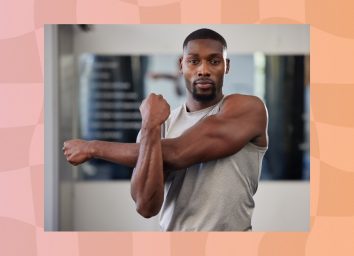The Strength Training Habits That Slow Aging, According to Science
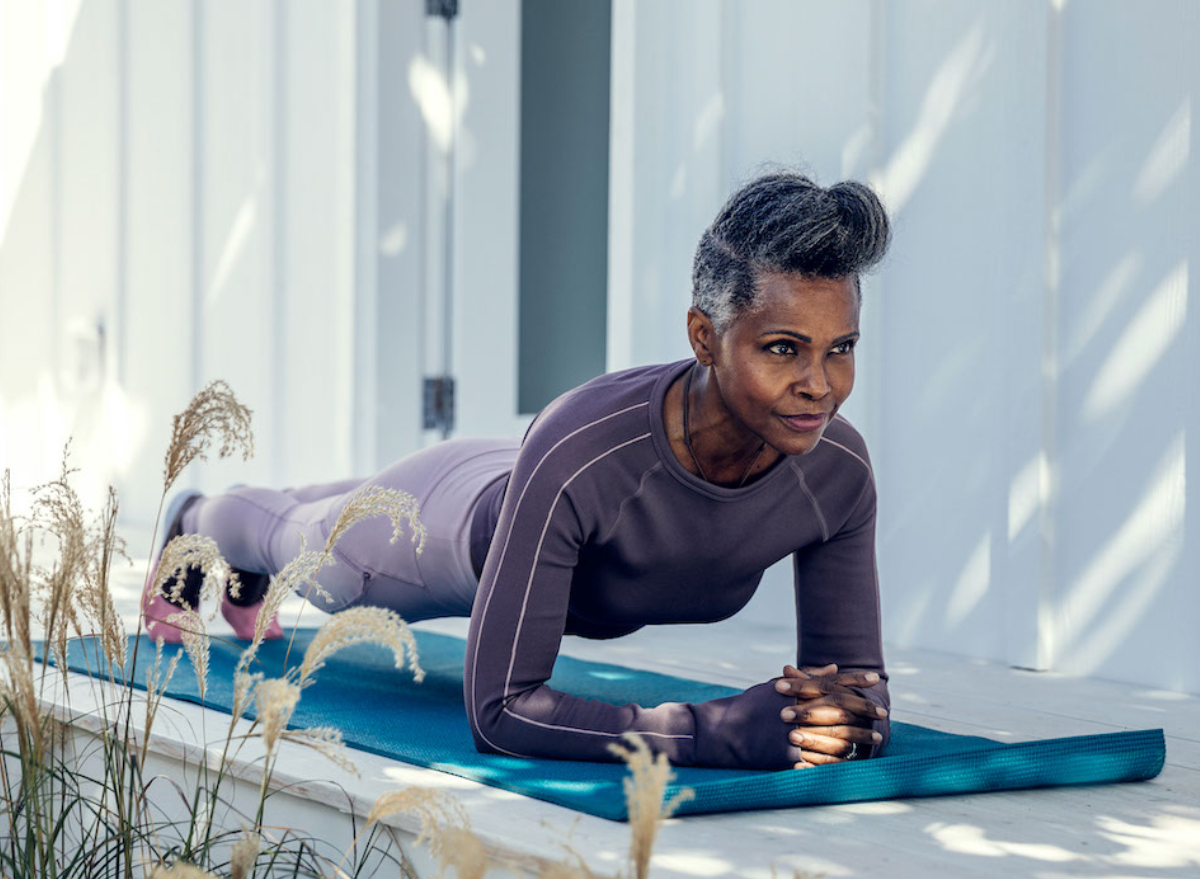
If you're looking to put the brakes on aging and embrace life to its fullest, one of the best gifts you can give your body is a good old-fashioned, healthy strength training regimen. There are many proven ways this form of exercise is beneficial to your health, and we're here to share the strength training habits that slow aging, according to science. Read on to learn more, and next, don't miss The 6 Best Exercises for Strong and Toned Arms in 2022, Trainer Says.
Strength training helps maintain muscle mass, enhances mobility, preserves bone density, and lowers your risk of disease
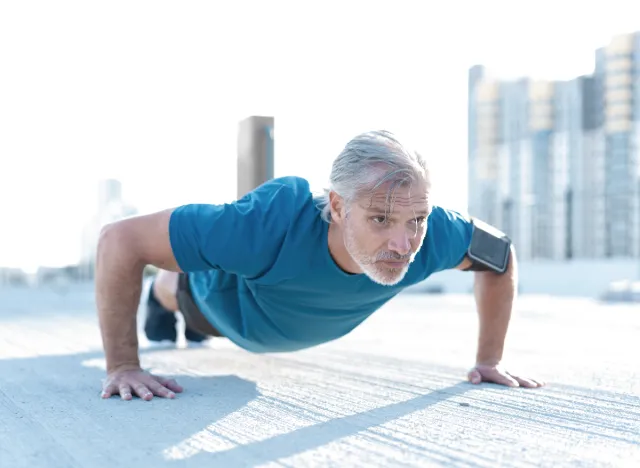
Performing strength training in your routine will add so much goodness to your overall well-being. Not only will you maintain muscle mass, but you will also enhance your mobility, keep your weight in check, and add more years of good health to your life. By performing strength training two to three days each week, you'll also preserve bone density and lower your chance of developing osteoporosis. Building muscle can help reduce depression, improve sleep, and lower the risk of disease, too.
And the best part of strength training? You don't have to lift 300 pounds in order to reap the astounding benefits. Now let's dive deeper into the strength training habits that slow aging, according to science.
Related: Foolproof Ways To Lead an Incredibly Healthy Lifestyle, Science Says
Compromised mobility is associated with chronic illness, falling, fractures, and even early death

As you age, you begin to lose muscle mass and strength. Compromised mobility is associated with chronic illness, falling, fractures, and even early death. Unless you step up your fitness game, your performance can begin to decline more and more each year. You can put yourself at risk of developing sarcopenia, which typically occurs around 65 to 70 years of age. This chronic condition results in tiredness, weakness, low energy, and impaired walking and stair climbing.
It's very troubling to have your mobility negatively impacted, yet research indicates that 30% of adults 70 years of age and older have difficulty walking, climbing steps, and getting up from a seated position, and it's wise to be proactive. Eric Shiroma, Sc.D., NIA scientist explains, "As we get older, there are inevitable functional and biological limitations that can cap exercise endurance, maximum strength, and fitness," adding, "Some of these limitations can be slowed down through an active lifestyle that includes strength training."
Say "no" to frailty, and set yourself up for a much more active—and better—quality of life
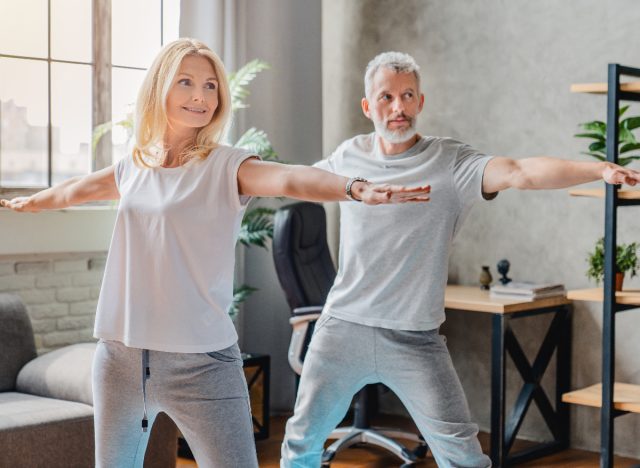
Okay, now that you know the many negatives resulting from inactivity, let's discuss the many beneficial strength training habits that slow aging. It's not too late to slow down your time clock, say "no" to frailty, and set yourself up for a much more active—and better—quality of life.
According to the National Institute on Aging, there are many ways to strength train, including using free weights or machines, resistance bands or medicine balls, or by doing weight-bearing moves like squats, pushups, or yoga. Resistance training calls for your muscles to contract and lift something against gravity's pull. The more you train, the more muscle you'll build.
Related: What Science Says About the Exercise Habits That Slow Aging
Start an ultimate combo of resistance training and walking

NIA-supported scientist Roger A. Fielding, Ph.D., associate director of the Jean Mayer USDA Human Nutrition Research Center on Aging at Tufts University outside Boston, has researched elderly individuals and the benefits of exercise. He and his colleagues have discovered the ultimate combo for aging adults is resistance training and walking (via the National Institute on Aging).
Fielding and his team came to this conclusion by observing session studies conducted at Tufts University, gyms, and local senior centers. The ultimate goal of each session is for participants to find the appropriate weights to work with for their personal body weight—not to become an impressive weight lifter or to achieve an incredibly muscular physique. In addition, Fielding's sessions inspire relationships within the groups, adding positivity and fitness all the way around. (Plus, research has shown that maintaining a healthy social life could help lengthen your lifespan!)
Every bit of strength training you do is beneficial, and it continues even after you're done working out
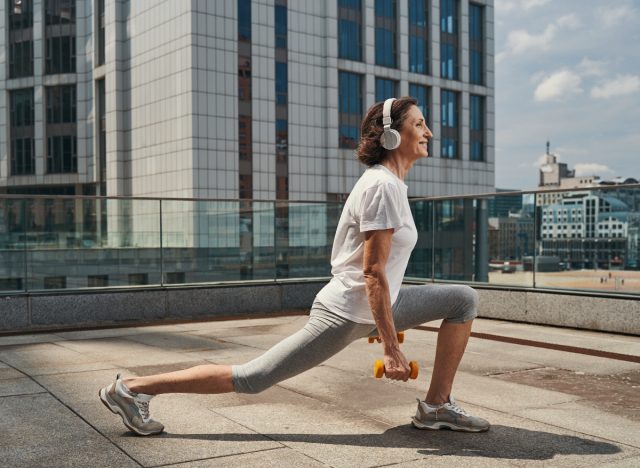
"When you do resistance or strength training, very important chains of molecules that relay signals between cells are affected, and these changes linger in the body for hours after exercise, building up a cumulative, positive effect. Even a low-intensity strength and walking program has substantial benefits," says Fielding. And he practices what he preaches, adding, "I've always run three or four times per week, but, about three years ago, I started making strength training part of my routine, and I feel stronger. My goal is to be able to do things I enjoy, including downhill skiing, as long as I can, and the best way to do that is to try to stay active."
Strength training paired with a healthy diet can be quite helpful when dealing with obesity

There's another benefit of strength training not to be overlooked. Strength training paired with a healthy diet can be quite helpful when dealing with obesity, says scientist Dennis T. Villareal, M.D., a professor at the Baylor College of Medicine in Houston (via the National Institute on Aging). This dynamic duo is even more effective than simply dieting or doing aerobic exercise on their own. Villareal points out, "About one-third of older adults have obesity and that number is rapidly expanding."
Obesity requires additional muscle mass in order to move the extra body weight. Villareal continues to explain, "Resistance training is the most important component because it builds muscle and reduces the loss of muscle mass. As the relationship between body mass and muscle becomes more positive, participants lose more fat than they lose muscle, so the relative sarcopenia is improved significantly. Combining the two types of exercise had additive effects so they were better together than separate."
Work with your own body, and don't compare yourself to younger individuals

It may not be fun to hear, but as you age, your body doesn't respond to workouts as well as it did when you were younger. Don't compare yourself to someone of a younger age.
"We all should think about how to build up a base of strong muscles to prepare for the loss of muscle and strength that we will experience as we age," suggests Barb Nicklas, Ph.D., professor, gerontology and geriatric medicine, Wake Forest University School of Medicine (via the National Institute on Aging). Nicklas adds, "A 60-year-old is very different from an 80-year-old. We need to be careful about lumping all older people into the same category. Aging starts at birth, and throughout our lifespans, exercising to help prevent disease and disability is very important. Movement, strength, and balance training is important at any age, but we need to adjust our expectations."
Fielding explains it's important to simply do what works for you, noting that some may prefer group fitness, while others like solo routines. Whatever you prefer, he notes that establishing "realistic goals" is crucial. "A good goal is about 150 minutes per week of moderate-level exercise, but you see benefits even at lower levels than that. Older adults should try to get strength training in the mix one to two times per week," Fielding says.
